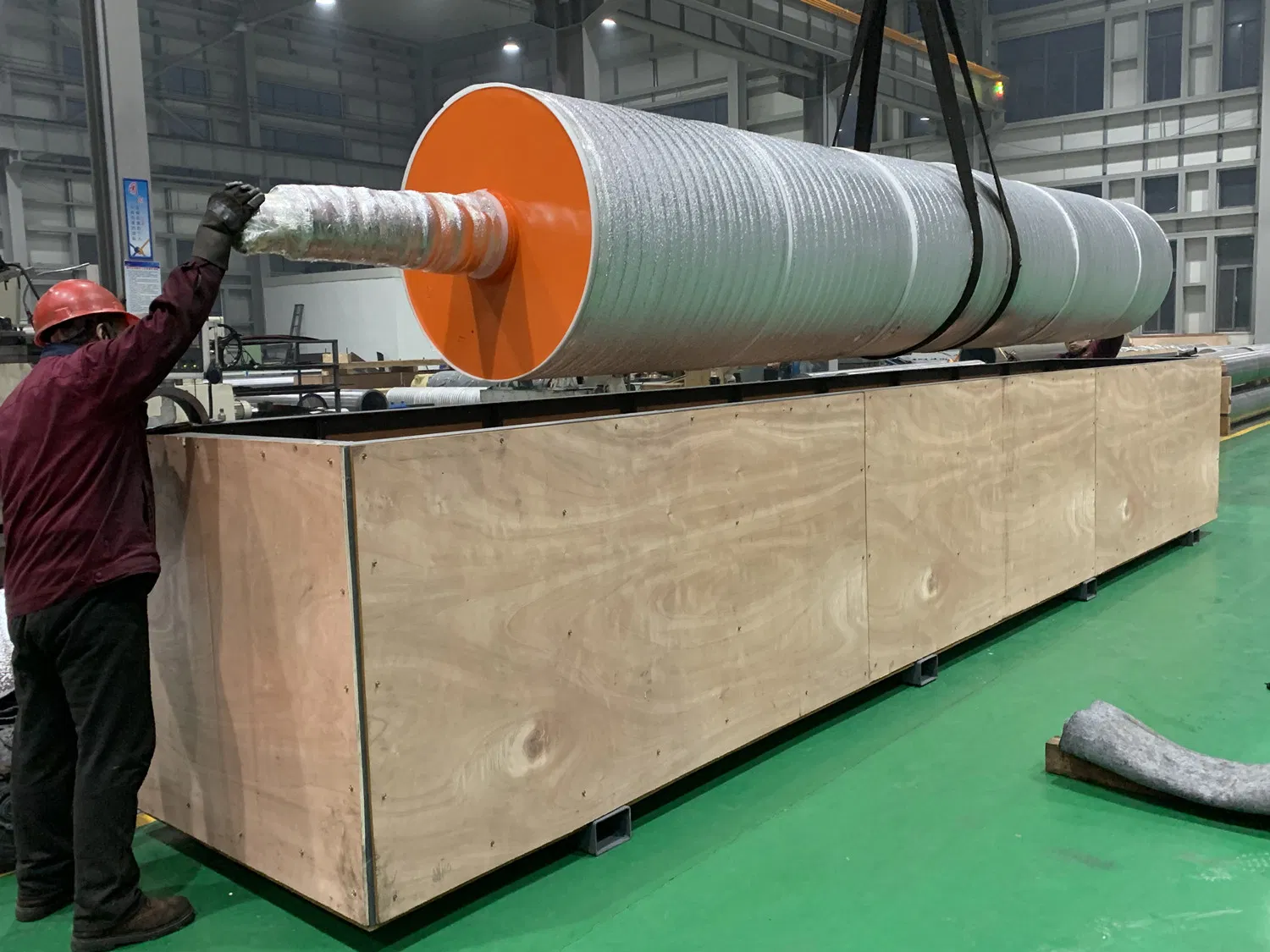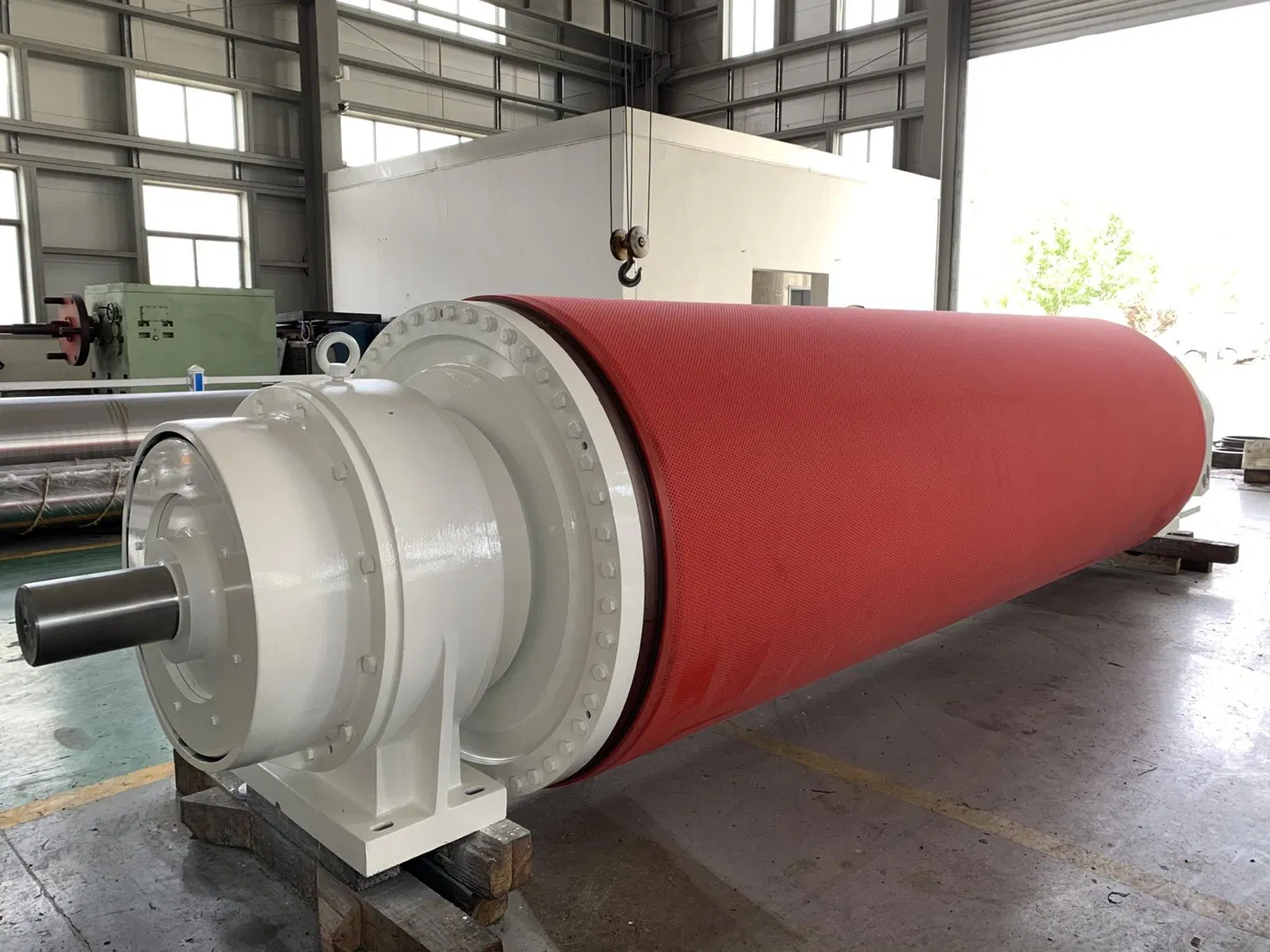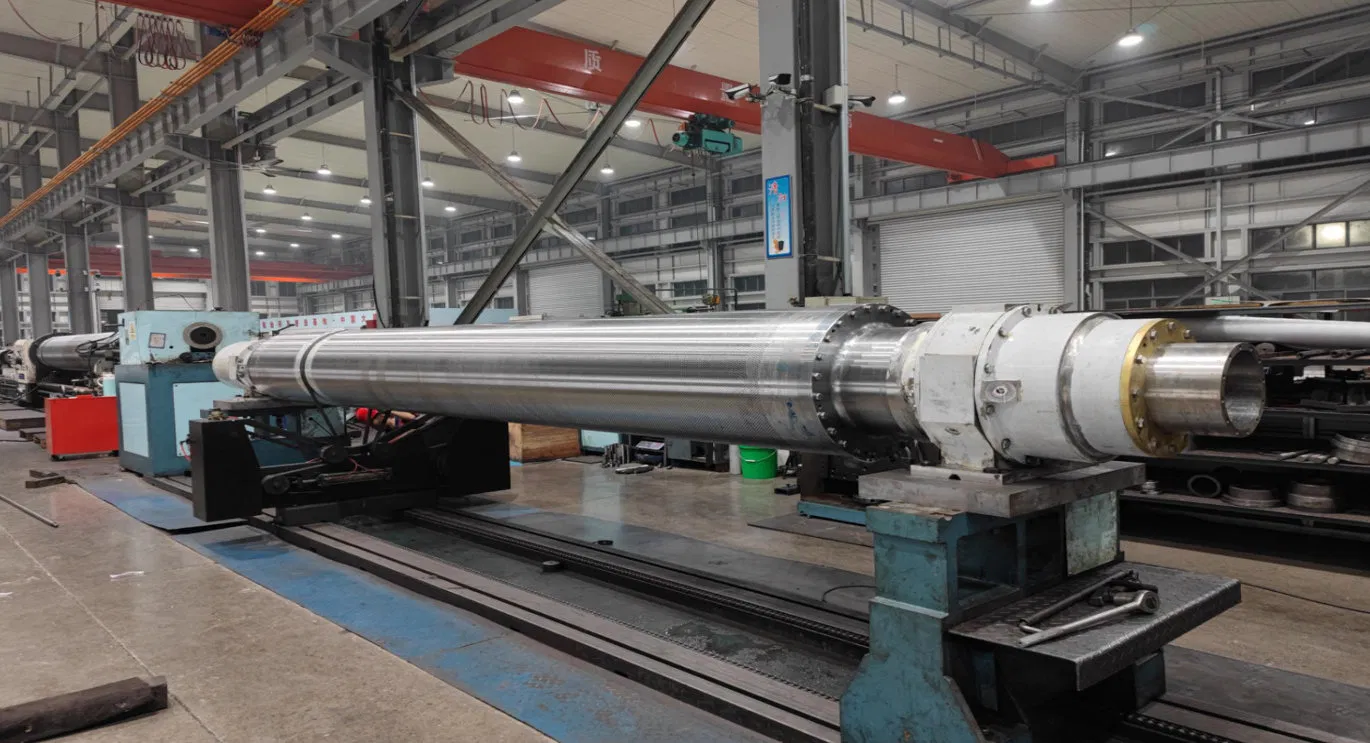To be honest, in the intricate world of pulp and paper manufacturing, every component plays a pivotal role in the final product's quality and the operation's overall efficiency. Among these, the press section stands out as a critical bottleneck where significant energy is consumed and dewatering occurs. And at the heart of this section are the press rolls, particularly those engineered with sophisticated blind hole designs. Understanding the nuances of blind hole press roll supply isn't just about procurement; it's about securing the very foundation of your production line's success.
Frankly speaking, a well-managed supply chain for these specialized rolls can mean the difference between consistent, high-quality paper output and costly downtime or subpar products. It’s a topic that often gets overlooked in the broader conversation about paper machine technology, yet its impact is profound. Have you ever wondered what truly goes into ensuring your paper machine runs at its optimal dewatering capacity? It largely boils down to the quality and availability of your press rolls.
The Critical Role of Blind Hole Press Rolls in Paper Production
Let's start by demystifying these essential components. Blind hole press rolls are not just any rolls; they are precision-engineered cylinders with thousands of precisely drilled holes on their surface. These holes, which do not penetrate the entire roll body, are designed to create a vacuum effect and provide temporary storage for water squeezed from the paper web as it passes through the press nip. This ingenious design significantly enhances dewatering efficiency, a process that is paramount to reducing energy consumption in the subsequent drying section.
Understanding the Technology Behind Enhanced Dewatering
The magic of blind holes lies in their ability to manage water removal under immense pressure. As the paper web enters the nip between two press rolls, water is forced out. Without these holes, the water would simply be reabsorbed by the web as it exits the nip, or it would create hydraulic pressure that could damage the web or reduce dewatering effectiveness. The blind holes provide pathways and reservoirs for this expelled water, ensuring it's quickly and efficiently removed from the web's surface. Interestingly enough, the diameter, depth, and pattern of these holes are meticulously calculated and designed to suit specific paper grades and machine speeds, making each roll a highly specialized piece of equipment.
Impact on Efficiency and Quality
The direct benefits of effective dewatering are manifold. Firstly, it drastically reduces the amount of moisture that needs to be evaporated in the dryer section, which is the most energy-intensive part of the paper machine. This translates directly into significant energy cost savings. Secondly, superior dewatering contributes to a stronger, more stable paper web entering the dryer, reducing breaks and improving runnability. Thirdly, it impacts the final paper quality, influencing properties like strength, stiffness, and surface characteristics. In my experience, even a small improvement in dryness after the press section can lead to substantial operational gains and a noticeable improvement in the end product. Many experts agree that optimizing this stage is key to a competitive edge.
Navigating the Landscape of Blind Hole Press Roll Supply
Procuring blind hole press rolls is far more complex than simply ordering a part. It involves strategic planning, understanding market dynamics, and forging strong relationships with suppliers. The demand for these rolls is constant, driven by wear and tear, scheduled maintenance, and the need for performance upgrades. Therefore, a robust blind hole press roll supply chain is non-negotiable for any paper mill aiming for uninterrupted, high-efficiency production.
Challenges in Procurement
One of the primary challenges in the procurement of these specialized rolls is the lead time. Given their complex manufacturing process, including precision drilling, grinding, and often specialized coatings, lead times can be extensive. This necessitates proactive planning and accurate forecasting of needs. Another challenge is customization. No two paper machines are exactly alike, and often, rolls need to be tailored to specific machine dimensions, operating conditions, and paper grades. This requires close collaboration with the supplier to ensure the roll meets exact specifications. Frankly speaking, getting this wrong can lead to costly delays and performance issues. The global nature of the pulp and paper industry equipment procurement also adds layers of complexity, from logistics to international trade regulations.
The Importance of a Robust Supply Chain
A robust supply chain for blind hole press rolls involves more than just purchasing. It encompasses inventory management, logistics, quality control, and the ability to respond to emergencies. Mills often maintain a spare set of rolls for critical positions to minimize downtime during roll changes or unexpected failures. However, storing these massive, heavy components requires significant space and specialized handling equipment. Therefore, a reliable supplier who can offer just-in-time delivery or rapid response in emergencies becomes an invaluable partner. It's worth noting that the relationship with your supplier should be a partnership, built on trust and mutual understanding of operational needs.

What Defines a Superior Blind Hole Press Roll Supplier?
Choosing the right supplier for your blind hole press rolls is a strategic decision that impacts everything from operational efficiency to maintenance costs and paper quality. It's not just about the price tag; it's about value, reliability, and partnership. Many experts agree that a truly superior supplier offers a comprehensive package that extends beyond the initial sale.
Expertise and Innovation
A top-tier supplier possesses deep technical expertise in roll design, materials science, and paper machine operations. They understand the intricate relationship between roll characteristics and dewatering performance. Look for suppliers who invest in research and development, constantly seeking to improve roll designs, materials, and surface coatings to enhance longevity and efficiency. Innovation in areas like advanced composite materials or specialized roll covers can significantly extend roll life and improve dewatering, ultimately contributing to better paper machine press roll optimization. I've found that suppliers who can offer insights into how their rolls can improve your specific machine's performance are often the most valuable partners.
Quality Assurance and Manufacturing Excellence
Precision is paramount in the manufacturing of blind hole press rolls. The drilling of thousands of holes must be incredibly accurate to ensure uniform dewatering across the web. The roll's core must be perfectly balanced and machined to tight tolerances to prevent vibration and ensure smooth operation at high speeds. A superior supplier will have stringent quality control processes at every stage of manufacturing, from raw material inspection to final dynamic balancing. They should be transparent about their manufacturing processes and quality certifications. Frankly speaking, cutting corners here can lead to premature wear, roll failure, and significant production losses.
After-Sales Support and Maintenance
The relationship with a reliable press roll manufacturer doesn't end when the roll is delivered. Excellent after-sales support, including installation guidance, troubleshooting, and maintenance services, is crucial. This might include regrinding services, re-covering, or even full roll refurbishment. A supplier who can provide comprehensive service, including expert technicians for on-site support, can significantly reduce your total cost of ownership and extend the lifespan of your rolls. It's worth noting that proactive maintenance advice and condition monitoring services are hallmarks of a truly committed partner.
Optimizing Performance Through Strategic Supply and Maintenance
Beyond the initial purchase, the ongoing management and maintenance of blind hole press rolls are critical for sustained performance. A strategic approach to blind hole press roll supply integrates procurement with a robust maintenance program, ensuring maximum uptime and efficiency.
Proactive Maintenance and Roll Management
Regular inspection and maintenance are vital. This includes monitoring roll surface condition, bearing health, and overall roll integrity. Predictive maintenance technologies, such as vibration analysis and thermal imaging, can help identify potential issues before they lead to catastrophic failure, allowing for planned interventions rather than reactive shutdowns. Developing a comprehensive roll management strategy, often in collaboration with your supplier, can optimize roll change schedules, minimize inventory holding costs, and ensure that refurbished rolls are ready when needed. In my experience, a well-executed roll rotation schedule, where rolls are periodically removed for inspection, regrinding, and re-covering, is key to extending their operational life and maintaining peak dewatering efficiency.

The Role of Technology in Supply and Operation
The digital transformation is also impacting the supply and management of press rolls. Advanced inventory management systems, often integrated with enterprise resource planning (ERP) software, can provide real-time visibility into roll stock, order status, and maintenance history. This data-driven approach helps optimize procurement cycles and reduce lead times. Furthermore, the integration of smart sensors into press rolls can provide continuous data on temperature, vibration, and nip pressure, allowing for real-time performance monitoring and predictive failure analysis. This level of insight can revolutionize how mills manage their press section, shifting from reactive repairs to proactive optimization.
The Future of Blind Hole Press Roll Supply: Trends and Innovations
The landscape of blind hole press roll supply is continuously evolving, driven by technological advancements, environmental concerns, and the ever-increasing demand for efficiency. Looking ahead, several key trends are set to shape the future of this critical component.
Sustainability and Eco-Friendly Solutions
With growing environmental awareness, there's an increasing focus on sustainable manufacturing practices. This translates to a demand for press rolls made from more durable, recyclable, or eco-friendly materials. Suppliers are exploring ways to reduce the environmental footprint of their manufacturing processes and to offer refurbishment services that extend the life of existing rolls, thereby reducing waste. The concept of a circular economy, where components are repaired, reused, and recycled, is gaining traction, and press roll suppliers are integral to this shift. It's worth noting that mills are increasingly seeking partners who align with their sustainability goals.
Customization and Advanced Materials
The trend towards highly specialized paper grades and higher machine speeds will drive further innovation in roll design and materials. We can expect to see more custom-engineered rolls tailored to very specific operational parameters, leveraging advanced composite materials, ceramics, and specialized polymers for enhanced durability, lighter weight, and superior dewatering performance. The integration of smart technologies, such as embedded sensors for real-time monitoring and data analytics, will become standard, providing unprecedented insights into roll performance and maintenance needs. This level of customization and technological integration will further solidify the partnership between mills and their suppliers.

Securing Your Production Future with the Right Blind Hole Press Roll Supply
In conclusion, the strategic management of blind hole press roll supply is far more than a logistical challenge; it's a critical determinant of a paper mill's operational efficiency, product quality, and long-term profitability. From understanding the intricate technology of these specialized rolls to navigating the complexities of their procurement and ensuring their optimal performance through proactive maintenance, every step is vital.
Choosing the right supplier—one that offers not just a product but a partnership built on expertise, quality, innovation, and unwavering support—is paramount. By embracing advanced technologies, focusing on sustainable practices, and fostering strong relationships within the supply chain, paper mills can ensure their press sections operate at peak efficiency, contributing significantly to a successful and sustainable future in the pulp and paper industry. It's a continuous journey of optimization, and the right blind hole press roll supply is your compass.
For more detailed information, please visit our official website:blind hole press roll supply
About the author: Dr. Anya Sharma is a seasoned expert in industrial equipment procurement and supply chain optimization, with over 15 years of experience specializing in the pulp and paper sector. Holding a Ph.D. in Materials Science, she has advised numerous leading paper manufacturers on enhancing operational efficiency through strategic sourcing and advanced maintenance practices for critical components like press rolls. Her insights are highly valued for their practical applicability and forward-thinking perspective.


